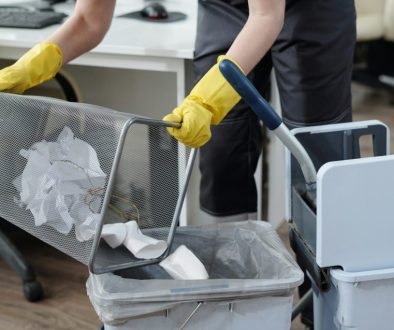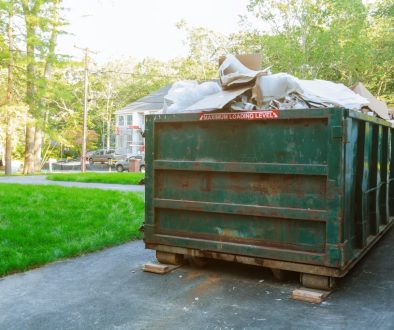Skip hire is a process whereby a company hires out a skip (a large container) to individuals or businesses who need to dispose of a large amount of waste. The process is simple and straightforward, and there are a number of companies who offer this service.
The process of skip hire is relatively straightforward and can be broken down into 10 simple steps:
1. Choose the Right Size Skip
The first step in the skip hire process is to choose the right size skip for your needs. The size of the skip will depend on the amount and type of waste you need to dispose of. Generally, skips come in a range of sizes, from small 2-yard skips for light domestic waste, to large 40 yard skips for commercial or industrial use. It is important to select the right size skip, as oversized skips may be more expensive, and undersized skips may not be capable of accommodating all of your waste.
2. Choose the Right Type of Skip
When selecting the right type of skip for your needs, you will need to consider the types of waste that you need to dispose of. Generally, there are two main types of skips – open skips and enclosed skips. Open skips are suitable for general and light domestic waste, whereas enclosed skips are best for hazardous materials and industrial waste. It is important to select the right type of skip to ensure that the waste is disposed of safely and securely.
3. Choose the Right Skip Hire Company
Once you have chosen the right size and type of skip, you will need to select a reliable skip hire company. To do this, you should research companies in your area to compare prices and services. You should also check the company’s reputation by reading online reviews, asking friends or family for recommendations, and checking with the relevant trade associations.
4. Book the Skip
Once you have found the right skip hire company, you will need to book the skip. This is usually done online or over the phone, and you will need to provide details such as the type and size of skip you require, the date and time you need the skip delivered, and the duration of the hire.
5. Deliver the Skip
The first step in the skip hire process is to arrange for the delivery of the skip. Most skip hire companies will provide delivery services to the customer’s location, so it’s important to provide the company with accurate information about the location and any access requirements needed. The size of the skip needed depends on the amount of waste to be disposed of, and the skip hire company will be able to provide advice on this. When the skip is delivered, it is important to ensure that it is placed on level ground and in an area that makes it easy to fill and collect.
6. Fill the Skip
Once the skip has been delivered, it is time to fill it with the waste that needs to be disposed of. The skip can be filled with any type of waste, such as garden waste, household items, construction debris, or commercial waste. It is important to ensure that the waste is placed in the skip in an orderly manner, so that it can be collected and disposed of safely. It is also important to ensure that any hazardous materials are placed in the skip in accordance with the regulations of the local authority.
7. Collect the Skip
Once the skip hire company has been chosen, the customer can collect the skip. Most companies will deliver the skip to the customer, however, this may incur an additional fee. The customer should check the size of the skip they are hiring, as this will determine the amount of waste that can be disposed of. When collecting the skip, the customer should ensure that it is delivered to a safe and accessible location.
8. Dispose of the Waste
The first step in the skip hire process is disposing of the waste. This includes both the collection and disposal of the waste. Depending on the type of waste, there are a number of ways to dispose of it. If it is hazardous waste, it should be disposed of in accordance with local laws and regulations. Otherwise, and wherever possible, the waste should be recycled.
9. Recycle the Waste
The second step in the skip hire process is to recycle the waste. This involves separating the waste into different categories, such as metal, paper, plastic, glass, and other materials. The waste can then be taken to a recycling centre where it can be broken down into its component parts and reused in other products. This helps to reduce the amount of waste that ends up in landfills, as well as reducing the amount of energy and resources needed to produce new products.
10. Waste Goes Back into the Ecosystem
The last step in the skip hire process is to ensure that the waste is returned to the ecosystem in a safe and responsible manner. This includes making sure that the waste is properly disposed of, and that it does not contaminate the environment or pose a risk to human health. Depending on the type of waste, it can be disposed of in a number of ways, such as by burying it, composting it, or burning it. It is also important to ensure that all of the waste is properly labelled and that it is stored safely until it can be disposed of.
Conclusion
Skip hire is an efficient and convenient way to get rid of household or commercial waste. It involves contacting a skip hire service provider, selecting a skip size, filling the skip with waste, and arranging for the skip to be collected. The skip hire service provider handles all the necessary paperwork, including permits and licenses, as well as ensuring that the waste is disposed of properly. By taking the hassle out of disposing of large amounts of waste, skip hire is an efficient and cost-effective way to get rid of unwanted items.
Are you trying to hire a skip in Stafford? Enviro Skip Hire is a family-run skip hire company servicing Staffordshire and Cheshire, which can ensure that you get the right skip, for the right waste, at the right place. Get in touch with us today!




